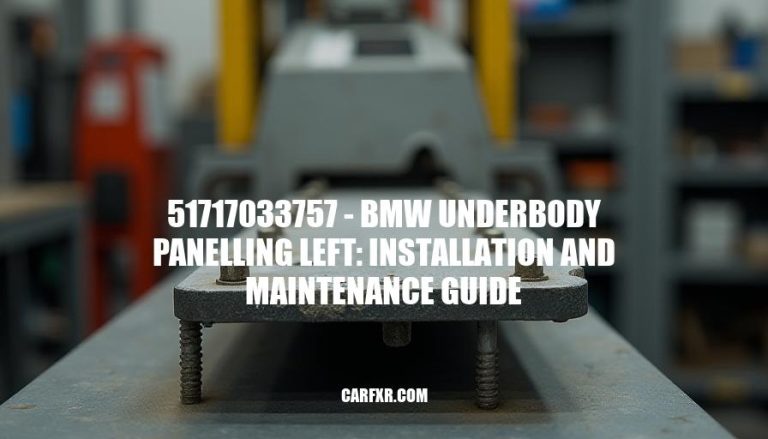
The BMW underbody panelling on the driver’s side is an important part that protects the underside of your car. It’s designed to shield the area from road debris, moisture, and other things that can cause damage. This helps keep the undercarriage in good condition, preventing rust and corrosion that can weaken the structure of your car.
The BMW Part underbody panelling, left 51717033757 is a genuine BMW component designed to protect the underfloor area of various BMW models. This part is made from high-quality materials that ensure durability and resistance to damage from road debris and other environmental factors. The underbody panelling is typically constructed from a combination of steel and plastic, providing both strength and lightweight properties.
In terms of design specifics, the part is shaped to fit precisely under the vehicle, covering the driver’s side underfloor area.
It is designed to be a direct replacement for the original part, ensuring a seamless fit and function. The dimensions of the part are approximately 73.4 x 38.2 x 10.1 inches, and it weighs around 8.10 pounds.
This underbody panelling is compatible with several BMW models, including the 2004-2010 BMW 525i, 525xi, 528i, 528i xDrive, 528xi, 530i, 530xi, 535i, 535xi, and M5. It is specifically designed for the E60 and E61 chassis, which are the sedan and wagon versions of the 5 Series.
Overall, the BMW Part underbody panelling, left 51717033757 is a crucial component for protecting the underfloor area of compatible BMW models, ensuring long-lasting durability and performance.
The BMW Part underbody panelling, left 51717033757 is a genuine component designed to protect the underfloor area of various BMW models from road debris, moisture, and other environmental factors that can cause damage.


